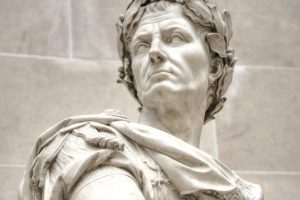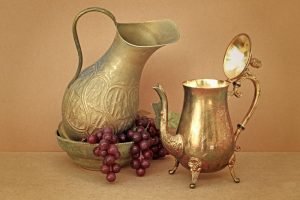
Ayesha Mahmood Malik, UK
With the holy month of Ramadan upon us once again, Muslims the world over will be turning their time and attention into pouring over the contents of their Holy Book, The Qur’an. Since the Qur’an was revealed during the month of Ramadan, a full and complete reading of the same is deemed highly desirable during the 30 days of fasting, and today Muslims can do this not just by physically opening the Qur’an but by reading and listening to it on their tablets and smartphones.
Yet this idea of a ‘soft copy’ of the Holy Qur’an is far removed from its earliest versions that were carved onto stones or pieces of parchment. The Qur’anic verses were committed to memory as they were revealed, and many companions of the Holy Prophet (sa) had learnt the entire Qur’an by heart. During the Battle of Yamama which was fought in December 632, dozens of huffaz (people who have committed the Qur’an to memory) lost their lives. This led Hazrat Umar (ra) to suggest to Hazrat Abu Bakr (ra), the caliph at the time, to initiate the process of compiling the Qur’an into written form.
Thus, while a full-scale distribution of the Holy Qur’an did not occur until the time of Hazrat Uthman (ra), the process of putting it together into a single book began with Hazrat Abu Bakr (ra) who asked Hazrat Zaid bin Thabit (ra) to undertake the task. However, there is a little-known and little-mentioned but historically striking fact in the process of compiling this very first version of the Qur’an – viz, that when its pages had been put together as one book, it was handed over for safekeeping to a woman.
That woman was Hazrat Hafsa bint Umar ibn al-Khattab – the first custodian of the Holy Qur’an. Hazrat Hafsa (ra) was the daughter of the second Rightly Guided Caliph, Hazrat Umar ibn al-Khattab (ra) and unlike what was customary at the time, she learnt to read and write at an early age. The family of Hazrat Umar (ra) was renowned for education and learning and Hazrat Hafsa (ra) was no exception, she memorised the entire Qur’an and 60 Ahadith (sayings of the Holy Prophet (sa)) have been quoted by her.
Hazrat Hafsa (ra) also holds the distinction of being one of the wives of the Holy Prophet (sa). She was first married to Hazrat Khunais bin Huzaifa (ra), a companion of the Holy Prophet (sa) who was severely injured during the Battle of Badr, later succumbing to his injuries. Like her father, she was inquisitive and sharp-witted and was known for undertaking a deep comprehension and scrutiny of Qur’anic injunctions. This thirst for knowledge accompanied by her curious nature meant that she would often engage in intellectual discourse with the Holy Prophet (sa) as a means of enhancing her insight and wisdom.
Her intellectual prowess together with her exemplary piety meant that even as verses of the Holy Qur’an were written down on pieces of parchment during the lifetime of the Holy Prophet (sa), he would entrust these to Hazrat Hafsa (ra) for safekeeping. Towards the end of his caliphate, Hazrat Umar (ra) bequeathed the compiled copy of the Holy Qur’an to his daughter, which remained with her until her demise. It was Hazrat Hafsa’s (ra) copy that was used during the caliphate of Hazrat Uthman (ra) for the widescale printing and dissemination of the Qur’an.
Therefore, in Hazrat Hafsa (ra) is an enduring but scarcely known legacy – the first custodian of the Holy Qur’an – a legacy that deserves to be recorded frequently in the pages of history and particularly during the month in which the Qur’an was first revealed.
About the Author: Ayesha Mahmood Malik is the Editor of the Law and Human Rights Section of the Review of Religions magazine. She is interested in Law and Religion, in particular Islam and Human Rights, the role of media in crisis reporting, International Human Rights and the import of religion on radicalisation. She has spoken frequently on these issues in the national media and various universities in the UK, including the University of Oxford and the London School of Economics. She is a graduate of Harvard Law School.




Add Comment